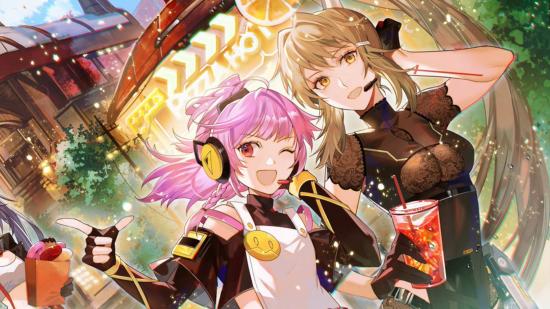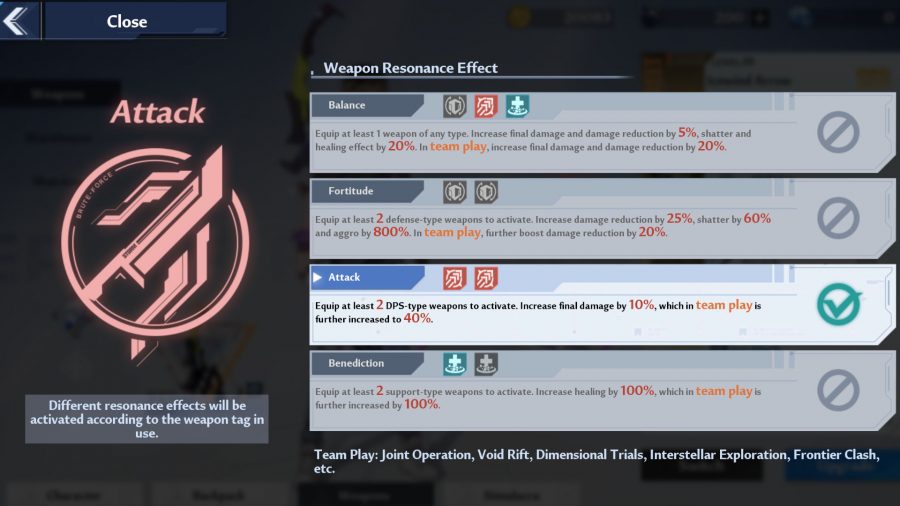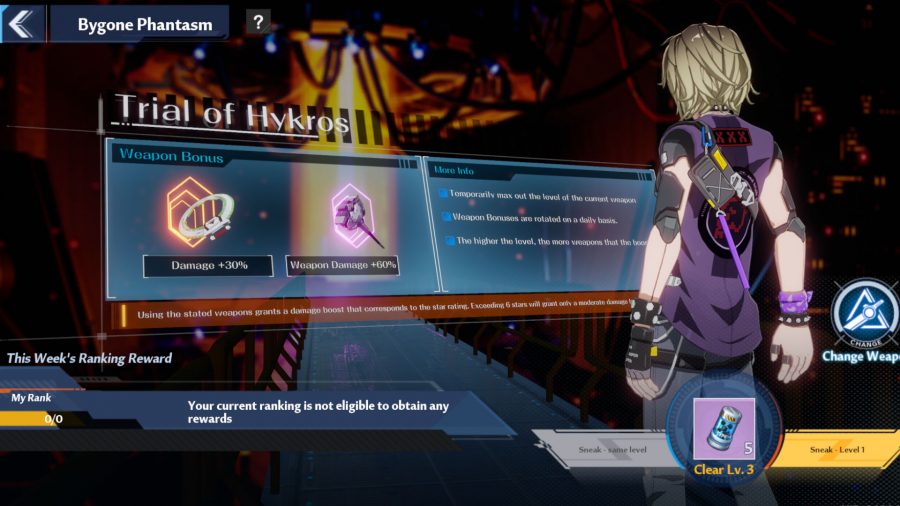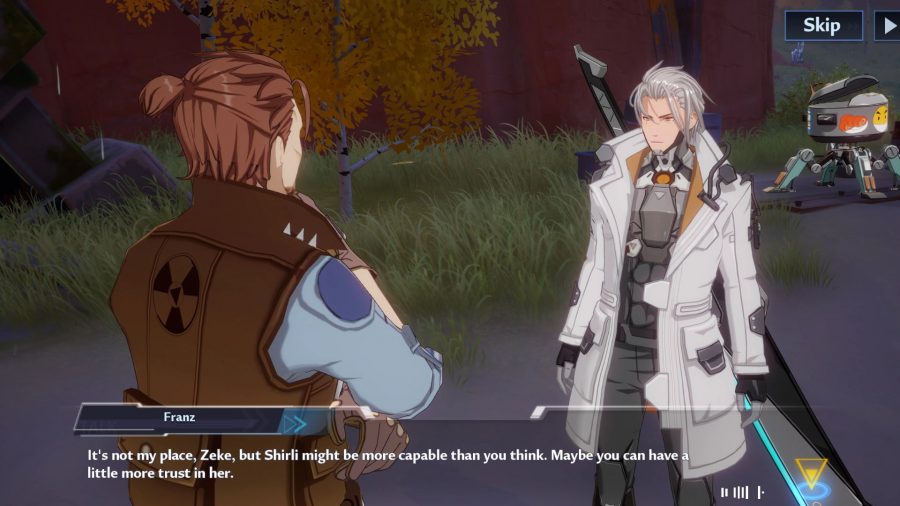Our Verdict
Tower of Fantasy breathes new life into the MMORPG genre, with its bustling, vibrant open world, expansive exploration, engaging narrative, fluid combat, and well-rounded balance between solo and multiplayer gameplay. It’s brimming with potential, and I can’t wait to see what the future holds for this post-apocalyptic gem.
Tower of Fantasy is truly something special. I felt it when I first leapt into the CBT, and my return to Aesperia in the pre-launch build has only further confirmed it. I knew from the offset that it had potential, offering a buffet of great features from a variety of genres – an open-world MMORPG with a busy world, striking aesthetic, strong setting, unique combat system, and more – and, given my long-term love affair with Genshin Impact, I don’t mind that it borrows some inspiration from Hoyoverse’s hit title.
With a goliath release like Genshin Impact and its massive success since launch, it’s unrealistic to think it wouldn’t have an impact (ha, get it?) on the gaming landscape as a whole – and I personally don’t think that’s a bad thing. Just as Genshin took lines from Breath of the Wild, Tower of Fantasy clearly built its foundations with Genshin’s blueprints in mind. But, after even an hour in-game, it’s easy to see that Tower of Fantasy is so much more than a Genshin clone. So, so much more.
Tower of Fantasy is set in a truly engaging, futuristic, post-apocalyptic world, where robots, drones, jetpacks, and monsters are a normal part of life. As with many RPGs, you take the role of an amnesiac wanderer and a newcomer to a small settlement that helps you as you come to terms with the environment around you. As much as the tried and tested fish-out-of-water format has become something of a cliche these days, it works well here, as you’re introduced to the world along with your character.
Plunged into the chaotic yet beautiful Aesperia, you’re surrounded by friendly (and some not-so-friendly) faces, and are quickly pulled into a range of high-scale conflicts. Despite the breathtaking settings and vibrant characters, danger lurks everywhere, mostly due to an outbreak of something called Omnium which causes humans, animals, and plants to gradually transform into aggressive, dangerous beasts unless they have an active suppressor equipped. This all adds a sense of peril to the gameplay and is the perfect set-up for some touching and hard-hitting moments – something that Hotta doesn’t skimp on.
The gameplay is extremely fluid and fun and offers plenty of variety which has kept me well entertained throughout the many hours I’ve spent playing so far. While there are plenty of core story missions and side quests common to all modern MMOs and RPGs, the world feels highly populated and interactive, and there’s constantly something going on. Whether you’re clearing enemy camps to unlock achievements, scaling mountains to reach items, opening chests, completing puzzles, or gathering materials, you’d be hard-pressed to run out of things to do. In fact, I’ve frequently found myself getting sidetracked by a cornucopia of goodies and beasties on my way to a mission location, and the exploration continues to feel rewarding even as you progress past the early stages.
Exploring is made significantly easier through your jetpack and, above all, your vehicle – a glowing bike which you can easily whip out and put away at the tap of a button. There are multiple other vehicles available to unlock later in the game, but your first comes with your initial visit to Hykros, and is very welcome by that point. Controlling the bike is a little tricky on mobile with touch screen controls, but with the addition of a controller or on the PC build it’s much more comfortable. You can also climb most surfaces, with controls and stamina usage reminiscent of Genshin Impact, and you have an equippable hoverboard designed for traversing over water, which is a treat to use.
As for the equippable jetpack, it has its pros and cons and certainly took some getting used to for me. The jetpack is classed as a relic, which means you can only use it when you have it equipped to one of the two relic slots available to you – with many other useful gadgets vying for your attention. It allows for substantial vertical movement and you can enable it after jumping from a height to cover a further distance.
However, the jetpack both has a cooldown and drains your stamina substantially, which can make it a little restrictive. It’s somewhat tricky to adapt to at first, and the vertical movement isn’t the easiest to control (especially on mobile) as opposed to the gliding mechanics of games like Breath of the Wild and Genshin, which I find far more intuitive. But the aesthetic and mechanics of the jetpack suit the world, and I appreciate the endeavour to try something different.
Combat in Tower of Fantasy feels great. The snappy combos, decent targeting system, and powerful moves, all enhanced by vibrant, explosive effects make you feel truly powerful, even when you’re just smacking a rock. Attacking mid-jump initiates aerial combos that drain stamina, adding to the wonderfully fluid feel of battle, and you’ll quickly become accustomed to flipping and zipping around, hopping from one enemy to the next, regardless of what weapon you’re wielding.
On that subject, instead of having a set of abilities or spells bound to characters (as is the norm in most MMORPGs and gachas), your skills are tied to your weapons. You can initially equip two weapons, though this later increases to three, each with their own normal, charged, and sprint attacks, as well as their own unique, cooldown-based skill. The main core of combat relies on you switching between them on the fly, changing up your style to suit what enemy you’re targeting.
As you fight with one weapon, your other weapons charge. When the gauge is full or you dash during an oncoming strong attack and enter the slow-mo ‘phantasia’ mode, switching your weapon unleashes a powerful ‘discharge’ attack, specific to the weapon you’re changing to. For example, Rosy Edge (SSR Meryl’s weapon) has you slam the ground, causing it to erupt with huge ice crystals that form a wall around you, damaging enemies in an AoE.
Then there are the Simulacra, these are echoes of powerful warriors, and pulling them unlocks their signature weapon. Naturally, the most powerful weapons are locked behind SSR Simulacra, but once you obtain them, you can equip them to any character you like, and have the option to purchase them in the store to gain more advancement stars, which unlock new abilities. Beyond their weapons, the Simulacra have no skills or stats, rendering them as little more than (very pretty) avatars to run around the world with. Though, with the wonderfully in-depth character creation screen, I personally spend most of my time playing as my own wanderer and feel it’s likely that many of you will, too.
The variety of weapons is really extensive, from the heavy-hitting blows of Ene’s Pummeler to the quick, frenzied shots of Samir’s Dual RM Stars. Due to the flexible, multi-weapon combat style, there are no hard rules when it comes to roles or classes, though you can shape your lineup in a specific way to reap the weapon resonance effects.
For example, equipping two or more DPS-type weapons enables the attack bonus, which increases your damage, whereas using two or more support-type weapons increases your healing rate. This isn’t an integral feature but adds a nice incentive to think about your weapon lineup. I personally tend to go with the attack bonus, using a bow, a melee weapon, and a healing staff, which has comfortably carried me through pretty much every single-player scenario.
Okay, okay, now I’ve gotta talk about the gacha. I have this affliction where I tend to gravitate towards gacha games but am not a fan of the gacha system itself, and how it’s essentially gambling. In Tower of Fantasy, weapons, Simulacra, and Matrices are all tied to gacha, meaning the aforementioned RNG gods dictate nearly every facet of the core gameplay.
I can’t comment on the premium currencies and prices as they’re not yet finalised, but, in its current state, gacha pulls are pretty easy to come by for free while out in the world. The most common is the black nucleus, a currency you use on the standard banner. Those suckers are just about everywhere – in chests, dandelion clocks, floating above trees – and, if you make a habit of snapping them up whenever you pass them, you get plenty of pulls through passive gameplay.
During the CBT, there were a whopping five banners running simultaneously – three character/weapon banners, and two Matrix banners, all with their own unique currencies, too. The pre-launch access only had three banners running, which was a lot easier to manage, but I presume the others will re-emerge come the full release. At the moment, I feel these features are not particularly well explained, and that they pose a serious learning curve for any players who are new to the world of gachas.
The rates seem similar to Genshin, which I personally find to be quite forgiving compared to other gacha games. For most banners, you’re guaranteed an SR or an SSR every ten pulls. The Matrix banners also offer a pity system that guarantees you an SSR every 40 pulls, whereas the Simulacra banners guarantee you an SSR every 80 pulls. Then there’s that standard weapon banner that you use the black nucleus on, which doesn’t seem to have a pity system, but, with how readily available that currency is, I still find myself snagging quite a few SR simulacra through them – though, of course, gacha rates could possibly change in the future.
Outside of world exploration and quests, there are plenty of other types of gameplay to take part in. Firstly, you have the daily commissions and training modules, which assign you a variety of trials in combat, speed, and more. Then there’s the Bygone Phantasm, which is essentially Tower of Fantasy’s answer to Genshin’s Spiral Abyss, with multiple floors of enemies and plenty of rewards to reap.
There’s also a great emphasis on co-operative play, though with the pre-release build I’ve not had the chance to truly explore this. I did, however, get to explore some of these features during the CBT, and they’re honestly very fun. The map offers multiple challenges that require two players to interact with them simultaneously in order to unlock rewards, and there are world bosses that take a team of four players to fight.
There are also a heap of multiplayer instances such as Joint Operations, Dimensional Trials, and Interstellar Exploration, which all appear to be different variations of co-op dungeons and raids. You can also join a crew (ToF’s version of guilds), through which you can offer and ask for assistance, and enjoy the benefits granted as your crew grows.
In terms of graphics and performance, I’m extremely impressed with Tower of Fantasy so far. I’ve had access to both the CBT and pre-launch builds now, and, having played many hours of each, it’s wonderful to see the game grow and become more polished. The pre-launch build still has a couple of hitches and is, at times, a little rough around the edges, with the occasional missing dialogue line, shaky resolution on pre-rendered cutscenes, and some NPC pathing issues, but it has come leaps and bounds since the CBT back in May. Hotta has also addressed some of the game’s remaining technical ‘shortcomings’ in a recent post and appears to be working hard to work out the kinks.
Regardless, I find it ran smoothly across all platforms. During the CBT I had access to ToF on both Android and PC, and with the pre-release build, I played on iOS and PC. The cross-platform play allows you to pick up seamlessly from one platform to another, and I didn’t experience any stuttering or lag. It looks beautiful on all platforms.
The characters, enemies, weapons, and environment designs are wonderfully cohesive, managing to bring a vivid sense of life to the wide, dystopian world you explore. The variation between environments is also striking, from wide, grassy plains and mountains, to snow-capped peaks.
Every character I’ve interacted with, whether plot-essential or background NPC, has had an interesting design befitting the place they live, and the Simulacra are gorgeous. I especially love Ene’s cyborg-esque design, see-through torso, and mechanical spine. I hope to see more male characters in the future, as the roster is currently very female-heavy (and I’m totally not just desperate for a playable version of Zeke…). Regardless, Hotta Studio has done a brilliant job of bringing these fantastic, futuristic anime designs to life in a 3D world.
Tower of Fantasy’s sound design is also lovely, with beautiful orchestral tracks and sound effects that fit perfectly with the environments and situations you find yourself in. The English dub is wonderful (I’ve not heard the other languages), with all main story quests having full voice acting from talented artists who suit their characters perfectly. The player character is also fully voiced, which is a nice bonus. The VA’s are truly emotive and believable, whether they’re talking about a lost loved one, an uncle who drinks too much, or their favourite food, and the dialogue feels relatively natural for a translation. Additionally, the snippets of lore and fun charts attached to each Simulacra truly help you to bond with the cast.
As I stated at the beginning of this review, Tower of Fantasy is truly something special. In fact, I’m itching to dive back in, even as I write this. Though much of its mechanics, world, lore, and more may feel familiar to seasoned gamers, it still manages to stand on its own two feet as a fresh experience, blending some of my favourite parts from several of my favourite genres into something really exciting, while still maintaining its own sense of identity. This isn’t a ‘Genshin clone’, nor is it a ‘Genshin killer’ – it’s Tower of Fantasy, and I can’t wait to see what its future has in store.
If you’re thinking of picking up the game, take a look at our Tower of Fantasy codes, Tower of Fantasy tier list, and Tower of Fantasy cooking guide for more.










